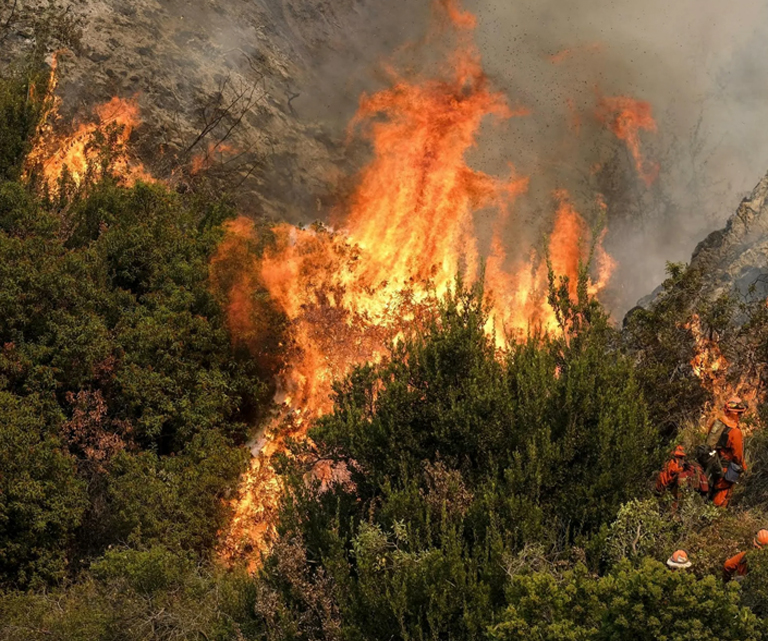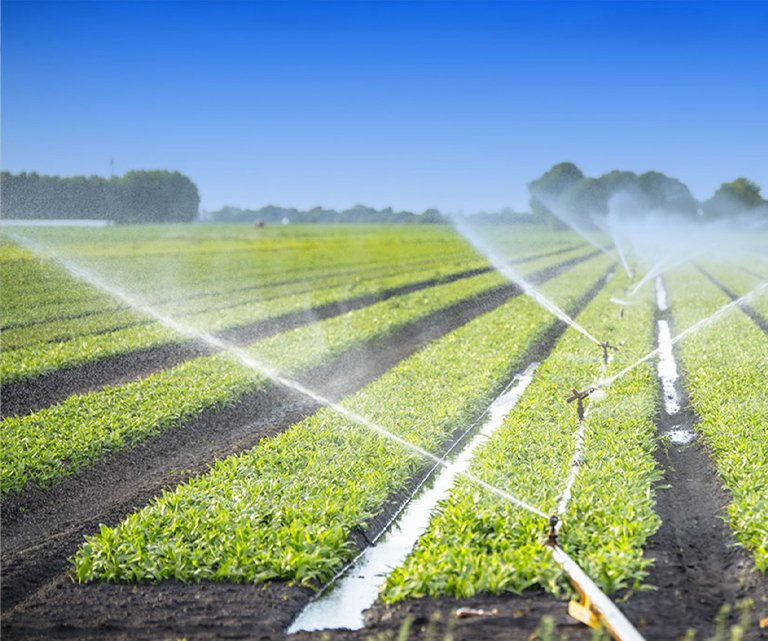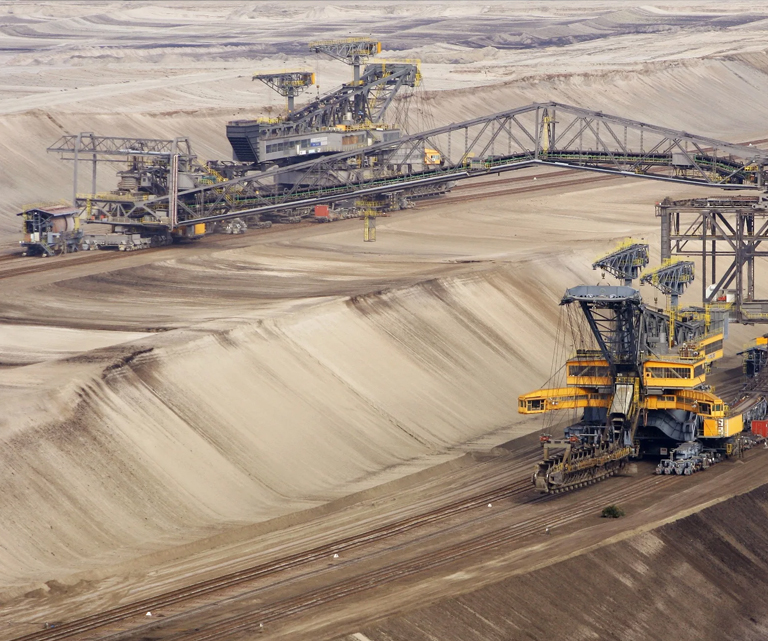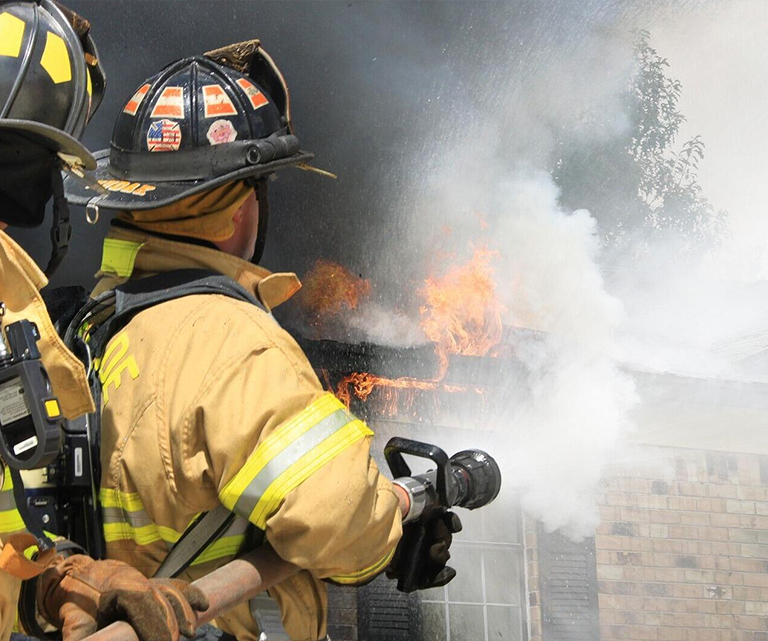Light weight, good elasticity, low resistance to water flow, easy to coil.
EPDM lined semi-rigid hoses are lined with EPDM (ethylene propylene diene monomer rubber) for aging resistance and long-term exposure to sunlight, ozone and extreme temperatures to ensure long-term durability. High elasticity makes it flexible and easy to install. The hoses are physically and chemically stable, resistant to abrasion, acids, alkalis and a variety of fluids, and are suitable for industrial, agricultural and chemical applications.

Forestry Fire Protection

Agricultural Fire Protection

Industrial Fire Protection

Municipal Fire Protection
Aging Resistance, High Elasticity, Chemical & Physical Stability, Wide Applicability, Semi-Rigid Structure.
| Pressure Required | |||||||
| Caliber | Work Pressure | Burst Pressure | |||||
| (inch/mm) | Bar | MPa | Psi | Bar | MPa | Psi | |
| 1* | 25 | 13-25 | 1.3-2.5 | 190-365 | 39-75 | 3.9-7.5 | 570-1090 |
| 1-1/4" | 32 | 8-25 | 0.8-2.5 | 120-365 | 24-75 | 2.4-7.5 | 350-1090 |
| 1-1/2" | 38 | 8-25 | 0.8-2.5 | 120-365 | 24-75 | 2.4-7.5 | 350-1090 |
| 1-3/4" | 45 | 8-25 | 0.8-2.5 | 120-365 | 24-75 | 2.4-7.5 | 350-1090 |
| 2" | 52 | 8-25 | 0.8-2.5 | 120-365 | 24-75 | 2.4-7.5 | 350-1090 |
| 2-1/2" | 64 | 8-25 | 0.8-2.5 | 120-365 | 24-75 | 2.4-7.5 | 350-1090(CCCF Certification) |
| 2-3/4" | 70 | 8-25 | 0.8-2.5 | 120-365 | 24-75 | 2.4-7.5 | 350-1090 |
| 3" | 75 | 8-25 | 0.8-2.5 | 120-365 | 24-75 | 2.4-7.5 | 350-1090(CCCF Certification) |
| 4" | 102 | 8-16 | 0.8-1.6 | 120-235 | 24-48 | 2.4-4.8 | 350-700 |
| 5" | 127 | 8-13 | 0.8-1.3 | 120-190 | 24-39 | 2.4-3.9 | 350-570 |
| 6" | 152 | 8-13 | 0.8-1.3 | 120-190 | 24-39 | 2.4-3.9 | 350-570 |
1. Understanding EPDM Lining Properties The EPDM rubber lining provides intrinsic resistance to heat, weather, and many chemicals. Its polymer structure determines susceptibility to: Acidic and alkaline solutions Petroleum products such as...
READ MOREI. The Structural Mandate of Fire Hoses The performance of an EPDM Fire Hose relies critically on the structural integrity of its two main components: the inner EPDM rubber liner (providing a smooth waterway and chemical resistance) and the...
READ MOREThe modern **EPDM Fire Hose** is an engineering marvel, designed to handle both the intense thermal stresses of fire suppression and the mechanical demands of deployment in extreme climates. EPDM (Ethylene Propylene Diene Monomer) rubber is...
READ MOREVulcanization is a process of cross-linking EPDM rubber macromolecular chains through heating, pressurization, and with the help of additives such as vulcanizing agents, so that the linear structure is transformed into a three-dimensional network structure. For EPDM semi-rigid flat-laid water hoses, this transformation gives them the necessary strength, elasticity and stability. In the unvulcanized state, the force between EPDM rubber molecular chains is weak, showing the characteristics of high fluidity and low strength, and cannot withstand water pressure and external friction. After vulcanization, the molecular chains are connected to each other through chemical bonds to form a stable network, which enables the rubber to resist deformation due to external forces and maintain a stable shape, laying the foundation for the water hose to realize the water delivery function.
Our fire-fighting equipment such as rubber/PVC/TPU lined fire hoses and agricultural water hoses have fully absorbed the advantages of similar products at home and abroad. In the production of EPDM water hoses, we also pay attention to the control of the vulcanization process. During the vulcanization process, the vulcanizer reacts with the unsaturated double bonds in the EPDM rubber to form crosslinks. Different types of vulcanizers will produce different crosslinking structures, which will affect the performance of the hose. For example, the polysulfide crosslinks formed by the sulfur vulcanization system give the rubber good elasticity, but the heat aging resistance is relatively weak; while the carbon-carbon crosslinks produced by the peroxide vulcanization system give the rubber excellent heat resistance and aging resistance. In production, it is necessary to select a suitable vulcanization system according to the use scenario of the hose to optimize the performance of the finished product. Jun'an Fire Technology will select a more suitable vulcanization system according to the specific application needs and standard requirements of the customer to ensure that the product meets the actual application needs of the customer.
The vulcanization temperature is an important parameter in the vulcanization process, which directly affects the crosslinking reaction rate and crosslinking structure. As the temperature rises, the molecular thermal motion intensifies, the decomposition rate of the vulcanizer accelerates, the crosslinking reaction rate increases, and the vulcanization time can be shortened. However, too high a temperature will cause the rubber molecular chain to break, resulting in over-vulcanization, increasing the hardness of the hose, decreasing its elasticity, and even causing surface cracking, reducing its flexibility and bending resistance, and easily causing damage during the actual laying and winding process.
If the temperature is too low, the cross-linking reaction will be incomplete, and there will be a large number of uncross-linked rubber molecules inside the hose, resulting in insufficient strength, reduced pressure bearing capacity, and easy pipe bursting during use. In addition, uneven temperature will cause inconsistent cross-linking degrees in different parts of the hose, and obvious local performance differences, affecting the overall reliability of use. Therefore, accurately controlling the vulcanization temperature and ensuring that the temperature is in the appropriate range and evenly distributed is the key to ensuring the quality of EPDM semi-rigid flat-laid hoses. Jun'an Fire Technology is very strict in material supply and selection, controlling quality from the source, and is also equipped with professional equipment and technicians in the vulcanization temperature control link to ensure accurate temperature control.
The vulcanization time and vulcanization temperature are interrelated and jointly determine the degree of cross-linking reaction. At a certain temperature, if the vulcanization time is too short, the cross-linking reaction is not sufficient, the cross-linking density of the rubber molecular chain is low, and the physical and mechanical properties of the water hose are poor, such as insufficient tensile strength and tear strength, which cannot withstand the water pressure and external force in normal use. As the vulcanization time increases, the cross-linking density gradually increases, the performance of the water hose improves, and when it reaches the positive vulcanization stage, the various performance indicators reach the best state. At this time, the water hose has good elasticity, strength and stability.
If the vulcanization time is further extended and the over-vulcanization stage is entered, the rubber molecular chain will undergo rearrangement, degradation and other side reactions, resulting in the destruction of the cross-linking structure, increased hardness, reduced elasticity and poor fatigue resistance of the water hose. In long-term use, over-vulcanized water hoses are more likely to age and harden, shortening their service life. Therefore, it is an important measure to ensure the quality of the finished product to accurately determine the vulcanization time according to the vulcanization temperature and formula so that the water hose can be produced in the positive vulcanization stage. With rich production experience and rigorous quality inspection processes, Jun'an Fire Technology accurately grasps the vulcanization time to ensure that each EPDM semi-rigid flat-laid water hose can achieve the best performance.
Vulcanization pressure is indispensable in the EPDM Semi-Rigid Layflat Hose process. It can make the rubber fully fill the mold cavity, discharge the internal air and volatiles, avoid the defects such as pores and bubbles, and ensure that the surface of the hose is smooth and flat, and the internal structure is dense. Sufficient vulcanization pressure helps to improve the bonding strength between the rubber and the reinforcing material (such as the braided layer), so that the two are closely combined to form a whole, and the bearing capacity of the hose is enhanced.
If the vulcanization pressure is insufficient, the rubber has poor fluidity and cannot fully wrap the reinforcing material, resulting in weak bonding, easy delamination during use, and seriously affecting the performance and service life of the hose. At the same time, insufficient pressure may also cause gaps inside the hose, reduce its pressure resistance, and easily leak or rupture during high-pressure water delivery. However, excessive vulcanization pressure will increase the equipment load, increase production costs, and may also damage the reinforcing material and reduce its mechanical properties. Therefore, it is an important consideration in the vulcanization process to reasonably control the vulcanization pressure so that it can not only ensure the quality of the hose, but also not cause resource waste and material damage. During the production process, Jun'an Fire Technology uses advanced equipment and strict operating specifications to achieve refined control of vulcanization pressure to ensure stable and reliable quality of water hoses.
By precisely controlling the vulcanization temperature, time and pressure to form an ideal cross-linking structure, the physical properties of EPDM semi-rigid flat water hoses can be significantly improved. The appropriate vulcanization process gives the water hose good tensile strength and tear strength, which can withstand the water pressure and external force during the water delivery process and is not easy to break. The optimized cross-linking network gives the water hose excellent elasticity and flexibility, so that it can be bent repeatedly without damage during the laying and winding process, which is convenient for operation and storage. The vulcanization process also affects the wear resistance of the water hose. A good cross-linking structure makes the rubber surface dense, reduces the degree of wear when rubbing against objects such as the ground, and prolongs the service life. In addition, a reasonable vulcanization process can improve the dimensional stability of the water hose, so that it maintains the consistency of shape and size under different temperature and pressure conditions, and ensures the stable performance of the water delivery function.
The vulcanization process not only determines the physical properties of water hoses, but also has an important impact on their chemical stability. The ideal cross-linking structure can reduce the number of unsaturated double bonds in the rubber molecular chain, reduce its reactivity with oxidizing substances such as oxygen and ozone, and improve the aging resistance of water hoses. In outdoor use scenarios, water hoses are exposed to sunlight and air for a long time. Good aging resistance can prevent aging phenomena such as surface cracking and hardening, and extend its service life.
The appropriate vulcanization process can also enhance the tolerance of water hoses to chemical media. EPDM rubber itself has a certain chemical corrosion resistance. After optimized vulcanization treatment, the cross-linking network is more stable and can resist the erosion of chemical substances such as acids and alkalis. It is suitable for more complex use environments, such as industrial wastewater transportation. Jun'an Fire Technology relies on in-depth research and strict control of the vulcanization process to produce EPDM semi-rigid flat water hoses that excel in chemical stability and can meet the stringent use requirements in many fields such as fire protection and industry.